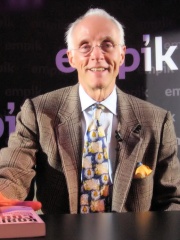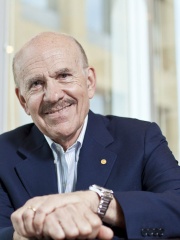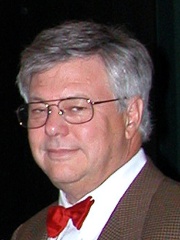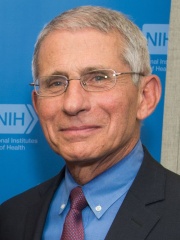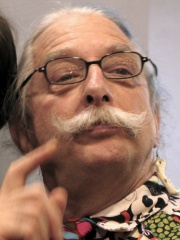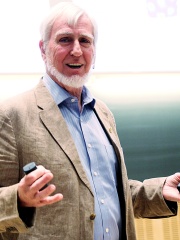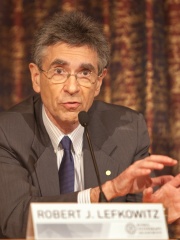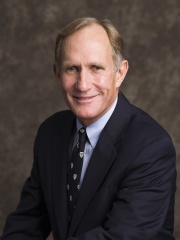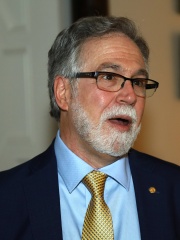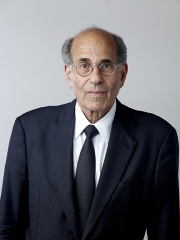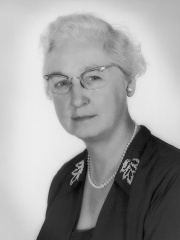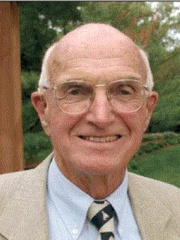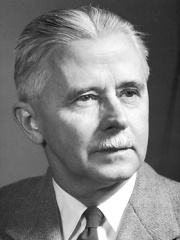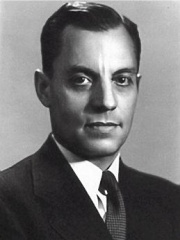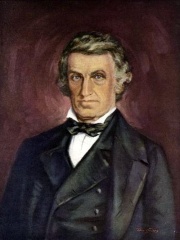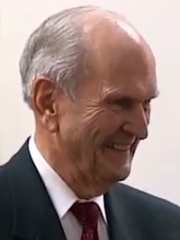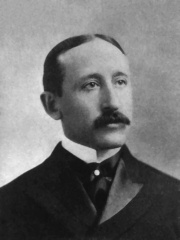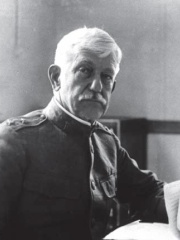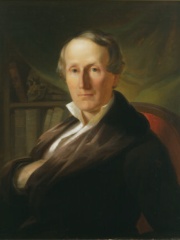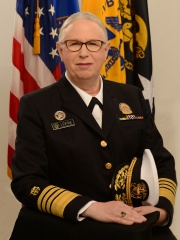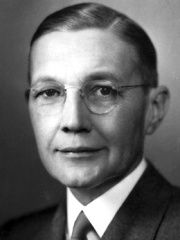
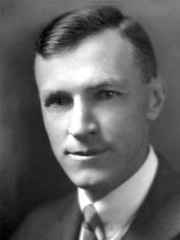
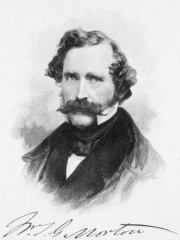
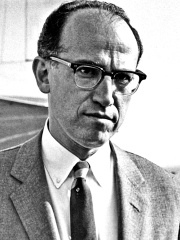
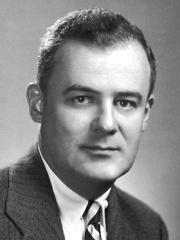
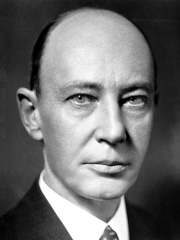
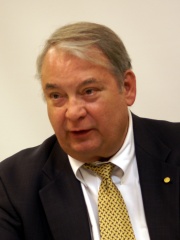
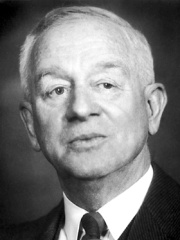
The Most Famous
PHYSICIANS from United States
This page contains a list of the greatest American Physicians. The pantheon dataset contains 502 Physicians, 81 of which were born in United States. This makes United States the birth place of the 2nd most number of Physicians.
Top 10
The following people are considered by Pantheon to be the top 10 most legendary American Physicians of all time. This list of famous American Physicians is sorted by HPI (Historical Popularity Index), a metric that aggregates information on a biography’s online popularity. Visit the rankings page to view the entire list of American Physicians.

1. Herbert Spencer Gasser (1888 - 1963)
With an HPI of 66.01, Herbert Spencer Gasser is the most famous American Physician. His biography has been translated into 50 different languages on wikipedia.
Herbert Spencer Gasser (July 5, 1888 – May 11, 1963) was an American physiologist, and recipient of the Nobel Prize for Physiology or Medicine in 1944 for his work with action potentials in nerve fibers while on the faculty of Washington University in St. Louis, awarded jointly with Joseph Erlanger.

2. William P. Murphy (1892 - 1987)
With an HPI of 65.70, William P. Murphy is the 2nd most famous American Physician. His biography has been translated into 54 different languages.
William Parry Murphy Sr. (February 6, 1892 – October 9, 1987) was an American physician who shared the Nobel Prize in Physiology or Medicine in 1934 with George Richards Minot and George Hoyt Whipple for their combined work in devising and treating macrocytic anemia (specifically, pernicious anemia).

3. William T. G. Morton (1819 - 1868)
With an HPI of 65.22, William T. G. Morton is the 3rd most famous American Physician. His biography has been translated into 36 different languages.
William Thomas Green Morton (August 9, 1819 – July 15, 1868) was an American dentist and physician who first publicly demonstrated the use of inhaled ether as a surgical anesthetic in 1846. The promotion of his questionable claim to have been the discoverer of anaesthesia became an obsession for the rest of his life.

4. Jonas Salk (1914 - 1995)
With an HPI of 65.06, Jonas Salk is the 4th most famous American Physician. His biography has been translated into 75 different languages.
Jonas Edward Salk (; born Jonas Salk; October 28, 1914 – June 23, 1995) was an American virologist and medical researcher who developed one of the first successful polio vaccines. He was born in New York City and attended the City College of New York and New York University School of Medicine. In 1947, Salk accepted a professorship at the University of Pittsburgh School of Medicine, where he undertook a project beginning in 1948 to determine the number of different types of poliovirus. For the next seven years, Salk devoted himself to developing a vaccine against polio. Salk was immediately hailed as a "miracle worker" when the vaccine's success was first made public in April 1955, and chose to not patent the vaccine or seek any profit from it in order to maximize its global distribution. The National Foundation for Infantile Paralysis and the University of Pittsburgh looked into patenting the vaccine, but since Salk's techniques were not novel, their patent attorney said, "If there were any patentable novelty to be found in this phase it would lie within an extremely narrow scope and would be of doubtful value." An immediate rush to vaccinate began in the United States and around the world. Many countries began polio immunization campaigns using Salk's vaccine, including Canada, Sweden, Denmark, Norway, West Germany, the Netherlands, Switzerland, and Belgium. By 1959, the Salk vaccine had reached about 90 countries. An attenuated live oral polio vaccine was developed by Albert Sabin, coming into commercial use in 1961. Less than 25 years after the release of Salk's vaccine, domestic transmission of polio had been eliminated in the United States. In 1963, Salk founded the Salk Institute for Biological Studies in La Jolla, California, which is today a center for medical and scientific research. He continued to conduct research and publish books in his later years, focusing in his last years on the search for a vaccine against HIV. Salk campaigned vigorously for mandatory vaccination throughout the rest of his life, calling the universal vaccination of children against disease a "moral commitment". Salk's personal papers are today stored in Geisel Library at the University of California, San Diego.
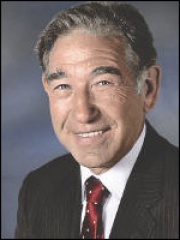
5. Stanley Cohen (1922 - 2020)
With an HPI of 64.32, Stanley Cohen is the 5th most famous American Physician. His biography has been translated into 53 different languages.
Stanley Cohen (November 17, 1922 – February 5, 2020) was an American biochemist who, along with Rita Levi-Montalcini, was awarded the Nobel Prize in Physiology or Medicine in 1986 for the isolation of nerve growth factor and the discovery of epidermal growth factor. He died in February 2020 at the age of 97.

6. Frederick Chapman Robbins (1916 - 2003)
With an HPI of 63.75, Frederick Chapman Robbins is the 6th most famous American Physician. His biography has been translated into 52 different languages.
Frederick Chapman Robbins (August 25, 1916 – August 4, 2003) was an American pediatrician and virologist. He was born in Auburn, Alabama, and grew up in Columbia, Missouri, attending David H. Hickman High School. He received the Nobel Prize in Physiology or Medicine in 1954 along with John Franklin Enders and Thomas Huckle Weller, making Robbins the only Nobel laureate born in Alabama. The award was for breakthrough work in isolating and growing the poliovirus in tissue culture, paving the way for vaccines developed by Jonas Salk and Albert Sabin. He attended the University of Missouri and Harvard University. In 1952, he was appointed professor of pediatrics at Case Western Reserve University. Robbins was elected a fellow of the American Academy of Arts and Sciences in 1962. From 1966 to 1980, Robbins was dean of the School of Medicine at Case Western. He was elected to the American Philosophical Society in 1972. In 1980, he assumed the presidency of the National Academy of Sciences' Institute of Medicine. He had been a member of the National Academy of Sciences since 1972. Five years later, in 1985, Robbins returned to Case Western Reserve as dean emeritus and distinguished university professor emeritus. He continued to be a fixture at the medical school until his death in 2003. The medical school's Frederick C. Robbins Society is named in his honor. His wife, Alice N. Robbins, died in 2016. She was the daughter of Nobel laureate John Howard Northrop. Robbins received the Benjamin Franklin Medal for Distinguished Achievement in the Sciences of the American Philosophical Society in 1999.

7. George Minot (1885 - 1950)
With an HPI of 63.35, George Minot is the 7th most famous American Physician. His biography has been translated into 52 different languages.
George Richards Minot ( MY-not; December 2, 1885 – February 25, 1950) was an American medical researcher who shared the 1934 Nobel Prize in Physiology or Medicine with George Hoyt Whipple and William P. Murphy for their pioneering work on pernicious anemia.

8. Ferid Murad (1936 - 2023)
With an HPI of 63.10, Ferid Murad is the 8th most famous American Physician. His biography has been translated into 50 different languages.
Ferid Murad (September 14, 1936 – September 4, 2023) was an American physician and pharmacologist, and a co-winner of the 1998 Nobel Prize in Physiology or Medicine.

9. Francis Peyton Rous (1879 - 1970)
With an HPI of 62.91, Francis Peyton Rous is the 9th most famous American Physician. His biography has been translated into 46 different languages.
Francis Peyton Rous (; October 5, 1879 – February 16, 1970) was an American pathologist at the Rockefeller University known for his works in oncoviruses, blood transfusion and physiology of digestion. A medical graduate from the Johns Hopkins University, he was discouraged to become a practicing physician due to severe tuberculosis. After three years of working as an instructor of pathology at the University of Michigan, he became dedicated researcher at the Rockefeller Institute for Medical Research for the rest of his career. His discovery in 1911 that a chicken tumor was caused by a virus (later named Rous sarcoma virus) led to more discoveries and understanding of the role of viruses in the development of certain types of cancer. He was awarded a Nobel Prize in Physiology or Medicine for his work in 1966, 55 years after his initial discovery and he remains the oldest recipient of the Nobel Prize in Medicine or Physiology. He and Joseph R. Turner studied methods to make use of blood types for blood transfusion. During World War I, they developed a technique for preserving blood sample by using an acid, citrate. This enabled the first practical storage of blood samples for transfusion and was introduced by Oswald H. Robertson at the front line in Belgium in 1917 as the world's first blood bank.
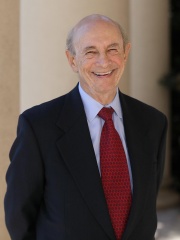
10. Harvey J. Alter (1935 - )
With an HPI of 62.68, Harvey J. Alter is the 10th most famous American Physician. His biography has been translated into 47 different languages.
Harvey James Alter (born September 12, 1935) is an American medical researcher, virologist, physician and Nobel Prize laureate, who is best known for his work that led to the discovery of the hepatitis C virus. Alter is the former chief of the infectious disease section and the associate director for research of the Department of Transfusion Medicine at the Warren Grant Magnuson Clinical Center in the National Institutes of Health (NIH) in Bethesda, Maryland. In the mid-1970s, Alter and his research team demonstrated that most post-transfusion hepatitis cases were not due to hepatitis A or hepatitis B viruses. Working independently, Alter and Edward Tabor, a scientist at the U.S. Food and Drug Administration, proved through transmission studies in chimpanzees that a new form of hepatitis, initially called "non-A, non-B hepatitis" caused the infections, and that the causative agent was probably a virus. This work eventually led to the discovery of the hepatitis C virus in 1988, for which he shared the Nobel Prize in Physiology or Medicine in 2020 along with Michael Houghton and Charles M. Rice. Alter has received recognition for the research leading to the discovery of the virus that causes hepatitis C. He was awarded the Distinguished Service Medal, the highest award conferred to civilians in United States government public health service, and the 2000 Albert Lasker Award for Clinical Medical Research.
Pantheon has 81 people classified as physicians born between 1745 and 1985. Of these 81, 23 (28.40%) of them are still alive today. The most famous living physicians include Harvey J. Alter, Robin Cook, and Louis Ignarro. The most famous deceased physicians include Herbert Spencer Gasser, William P. Murphy, and William T. G. Morton. As of April 2022, 11 new physicians have been added to Pantheon including Harvey J. Alter, Warren Sturgis McCulloch, and Ancel Keys.
Living Physicians
Go to all Rankings
Harvey J. Alter
1935 - Present
HPI: 62.68
Robin Cook
1940 - Present
HPI: 61.53
Louis Ignarro
1941 - Present
HPI: 61.29
Michael Stuart Brown
1941 - Present
HPI: 60.43
Anthony Fauci
1940 - Present
HPI: 60.08
Patch Adams
1945 - Present
HPI: 59.87
John O'Keefe
1939 - Present
HPI: 57.53
Robert Lefkowitz
1943 - Present
HPI: 57.47
Peter Agre
1949 - Present
HPI: 56.63
Randy Schekman
1948 - Present
HPI: 54.21
Gregg L. Semenza
1956 - Present
HPI: 53.46
Richard Axel
1946 - Present
HPI: 53.24

Deceased Physicians
Go to all Rankings
Herbert Spencer Gasser
1888 - 1963
HPI: 66.01
William P. Murphy
1892 - 1987
HPI: 65.70
William T. G. Morton
1819 - 1868
HPI: 65.22
Jonas Salk
1914 - 1995
HPI: 65.06
Stanley Cohen
1922 - 2020
HPI: 64.32
Frederick Chapman Robbins
1916 - 2003
HPI: 63.75
George Minot
1885 - 1950
HPI: 63.35
Ferid Murad
1936 - 2023
HPI: 63.10
Francis Peyton Rous
1879 - 1970
HPI: 62.91
Virginia Apgar
1909 - 1974
HPI: 62.31
Joseph Murray
1919 - 2012
HPI: 61.73
Haldan Keffer Hartline
1903 - 1983
HPI: 61.46

Newly Added Physicians (2022)
Go to all Rankings
Harvey J. Alter
1935 - Present
HPI: 62.68
Warren Sturgis McCulloch
1898 - 1969
HPI: 52.52
Ancel Keys
1904 - 2004
HPI: 48.35
William Beaumont
1785 - 1853
HPI: 48.08
Russell M. Nelson
1924 - Present
HPI: 46.83
Bernard Nathanson
1926 - 2011
HPI: 45.03
James Ewing
1866 - 1943
HPI: 43.99
William C. Gorgas
1854 - 1920
HPI: 43.51
Robert Spitzer
1932 - 2015
HPI: 43.10
Samuel George Morton
1799 - 1851
HPI: 42.24
Rachel Levine
1957 - Present
HPI: 37.10

Which Physicians were alive at the same time? This visualization shows the lifespans of the 25 most globally memorable Physicians since 1700.

